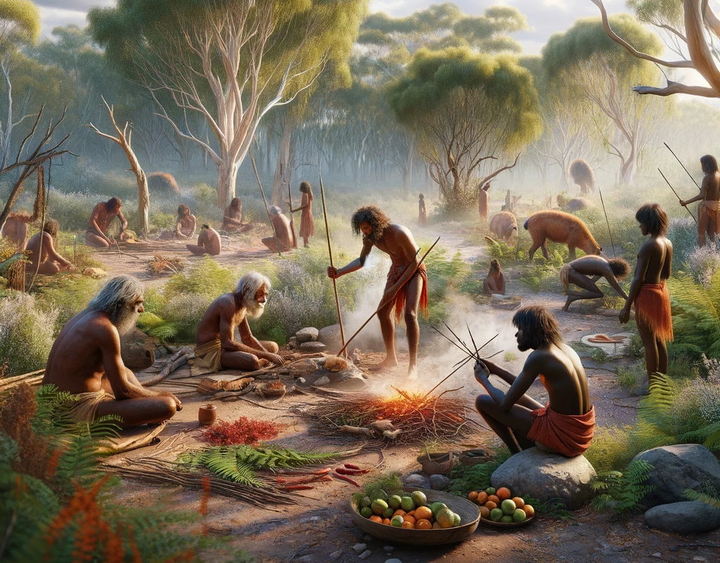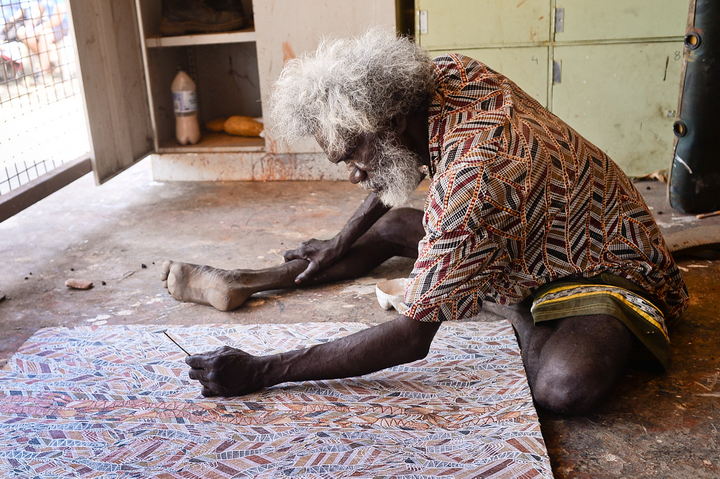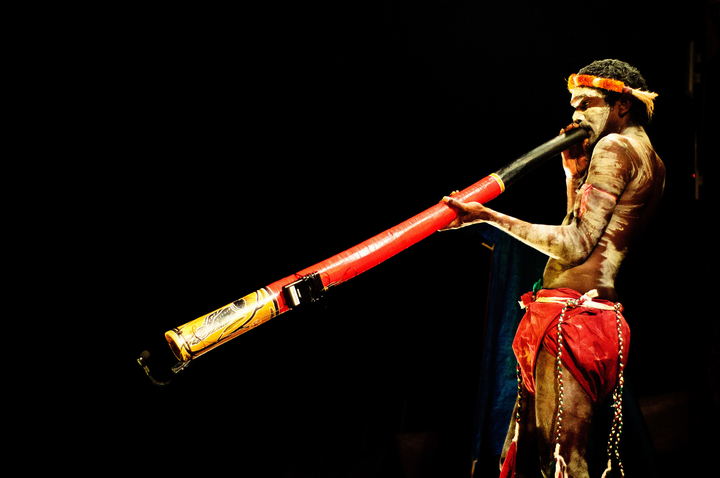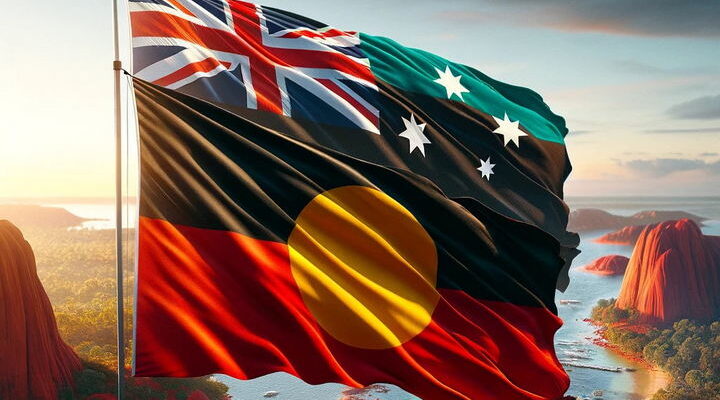Australia’s rich tapestry of history is deeply intertwined with the vibrant Aboriginal culture. This culture, a cornerstone of the nation’s heritage, has piqued global curiosity and respect. With over 984,000 Aboriginal and Torres Strait Islander people currently residing in Australia, representing about 3.8% of the population, their story is not just one of historical significance but of contemporary relevance and influence.
The Aboriginal and Torres Strait Islander community, characterized by a younger age demographic and a unique socio-economic landscape, continues to shape Australia’s cultural and social narrative. Despite facing challenges, they stand as a testament to resilience and the enduring strength of the world’s oldest continuous cultures.
Online platforms and resources are buzzing with discussions and explorations about Aboriginal traditions and customs. From the vibrant art and storytelling traditions to the rich spiritual beliefs, every aspect of this culture offers a window into a civilization that has thrived for millennia. This growing interest goes beyond mere fascination. It reflects a collective desire to understand, appreciate, and celebrate the depth of Aboriginal and Torres Strait Islander heritage.
As we step into the world of Aboriginal culture, let’s prepare to uncover some of the most fascinating aspects that make this culture a treasure not only for Australia but for the entire world.
10 – Oldest Continuous Civilization: A Legacy Spanning Over 65,000 Years
The Aboriginal and Torres Strait Islander cultures are not just historical footnotes. They represent the world’s oldest continuous civilization, extending back over 65,000 years. This remarkable longevity marks a journey that began when the first humans migrated out of Africa, across Asia, and finally reached the Australian shores.
Their survival through millennia is a testament to their resilience and adaptability. It reflects a deep understanding of the land and its ecosystems. From intricate art forms to complex social structures, Aboriginal cultures have evolved, yet maintained a continuous link to their ancestral past.
This enduring connection to history is not just about survival. It’s about preserving a rich tapestry of traditions, languages, and spiritual beliefs. The longevity of Aboriginal cultures challenges us to rethink our own connection with history and the environment.
09 – The Mosaic of Aboriginal and Torres Strait Islander Cultures
When we talk about Aboriginal and Torres Strait Islander peoples, it’s crucial to recognize the incredible diversity within these groups. Far from being a homogenous entity, these cultures consist of hundreds of nations, each with its own unique language, traditions, and beliefs.
At the time of colonial invasion in 1788, it’s estimated that around 250 languages and 600 dialects were spoken across over 500 different nations. This diversity is a kaleidoscope of cultures, each contributing to the rich quilt that makes up Australia’s indigenous heritage.
Such diversity underlines the complexity and richness of Aboriginal and Torres Strait Islander societies. Each group, with its distinct customs and languages, contributes to a broader understanding of what it means to be Indigenous in Australia. This diversity is a source of strength, resilience, and pride, underscoring the unique place these cultures hold in the world’s cultural heritage.
08 – Symbols of Identity: The Aboriginal and Torres Strait Islander Flags
The Aboriginal and Torres Strait Islander flags are powerful symbols of identity and pride. The Aboriginal flag, designed in the 1970s, features three colors: black, representing the people; yellow, symbolizing the sun; and red, denoting the earth and the relationship between people and land. Each color carries deep significance, embodying the essence of Aboriginal life and spirituality.
Similarly, the Torres Strait Islander flag, created in the 1990s, comprises symbols and colors rich in meaning. The white dharri or deri (a type of headdress), with a five-pointed star, represents the island groups. The colors white, green, black, and blue symbolize peace, land, people, and sea, respectively. These flags are not just emblems but narrate stories of the people, their land, and their profound connection to both.

07 – The Dreamtime: A Foundation of Aboriginal Spirituality
The Dreamtime, or the Dreaming, is the cornerstone of Aboriginal spirituality and worldview. It transcends a mere creation story, encapsulating the complex network of beliefs, existence, and the genesis of life. This timeless concept intertwines the past, present, and future, detailing how Spirits crafted the land, waterways, and all living beings.
This profound spiritual lore is passed down through generations via stories, songs, dances, and ceremonies, playing a pivotal role in the cultural fabric of Aboriginal communities. It’s a living tradition, shaping the way the Aboriginal people understand the world, their kinship responsibilities, and their stewardship of the land. The Dreamtime stories are not just tales from the past. They are a living guide, providing context and meaning to the Aboriginal way of life.
06 – Embracing the Land: The Hunter-Gatherer Lifestyle of Indigenous Australians
Aboriginal and Torres Strait Islander communities historically embraced a hunter-gatherer lifestyle, deeply intertwined with the Australian landscape. This nomadic existence was not just a means of survival; it was a harmonious interaction with nature. They moved across territories, guided by the seasons and ecological signs, to forage, hunt, and gather food and resources.
This lifestyle underscores a profound understanding and respect for nature’s balance. It’s a legacy that continues to influence Indigenous cultures, shaping their connection with the land. While modern lifestyles have changed, the essence of this deep relationship with nature persists in Indigenous communities, reminding us of a sustainable way of living in harmony with our environment.
05 – Vibrant Expressions: Art and Storytelling in Aboriginal Culture
Art and storytelling hold a central place in Aboriginal culture, serving as vibrant expressions of history, spirituality, and identity. Traditional Aboriginal art, encompassing painting, carving, pottery, and weaving, is not just aesthetically significant; it’s a conduit for passing down the lore of the Dreamtime, history, and cultural values.
Storytelling, deeply ingrained in Aboriginal society, is a dynamic way to educate, preserve traditions, and share wisdom. These stories, often conveyed through intricate art, dance, and music, bridge generations, keeping the culture vibrant and alive. They reflect a culture rich in imagination and spirituality, where every song, dance, and painting tells a story of the land, ancestors, and the universe’s mysteries.

04 – Rhythms of the Soul: The Integral Role of Music and Dance in Aboriginal Culture
Music and dance are the pulsating heart of Aboriginal culture, encapsulating its spirit and vitality. These art forms are more than mere entertainment; they are profound expressions of identity, history, and connection to the land. Traditional instruments like the didgeridoo, clapsticks, and drums are not just musical tools but symbols of a deep cultural resonance.
The rhythms and movements in Aboriginal music and dance narrate stories, celebrate the cycles of nature, and mark significant life events. Ceremonial dances, in particular, are a powerful medium, connecting participants and spectators with their ancestors, the Dreamtime, and the spiritual realm.
This artistic expression has evolved yet remains deeply rooted in tradition, showcasing the dynamic nature of Aboriginal culture. Music and dance continue to be a vibrant, living testament to the resilience and creativity of Indigenous Australians, resonating across generations and communities.
03 – The Foundation of Society: Customary Laws and Kinship in Aboriginal Cultures
Customary laws and kinship systems form the bedrock of Aboriginal societies, guiding relationships, social structure, and cultural practices. These laws, passed down through generations, are not just rules to live by; they embody the wisdom and experience of ancestors, ensuring the continuation of traditions and the well-being of the community.
Kinship is a complex network that defines roles, responsibilities, and connections among community members. It’s a system that goes beyond biological relations, encompassing the entire social fabric of Aboriginal societies. These laws and kinships dictate interactions, ceremonial practices, and the stewardship of the land, reinforcing the sense of community and identity.
Respect for elders, who are the custodians of this knowledge, is paramount. They are the wisdom figures, ensuring that the laws and traditions are upheld and passed on to future generations. In this way, customary laws and kinship systems are not static but living, breathing aspects of Aboriginal culture that continue to adapt and thrive in the modern world.
02 – The Significance of Walkabout Rituals in Aboriginal Culture
Walkabout rituals hold a sacred place in Aboriginal culture, embodying a journey of discovery, survival, and spiritual awakening. More than a mere travel, walkabouts are a rite of passage, especially for young Aboriginal individuals, marking the transition to adulthood. These journeys, often undertaken in the wilderness, are times of deep reflection, learning, and connection with the land.
During a walkabout, individuals immerse themselves in nature, relying on traditional knowledge of the environment for sustenance and guidance. This practice is not just about physical survival; it’s a spiritual quest, enabling individuals to find their place in the community and the natural world. Walkabouts reinforce the Aboriginal ethos of living in harmony with nature and respecting the ancestral lands, a tradition that continues to be a vital part of their cultural identity.

01 – The Essence of Aboriginal Smoking Ceremonies
Smoking ceremonies are an integral and sacred aspect of Aboriginal culture, serving as rituals of cleansing and blessing. These ceremonies, involving the burning of various native plants, create smoke believed to have purifying properties. The smoke is used to cleanse people, objects, and places of negative spirits and to usher in positive energy.
Traditionally, smoking ceremonies are performed during significant events such as welcoming guests, commemorating milestones, and in healing practices. The act of smoking is more than a ritual; it’s a link to the spiritual world, a means of communication with ancestors, and a way to maintain the balance between the physical and spiritual realms.
These ceremonies embody the deep respect Aboriginal people have for nature and their understanding of its healing powers. Today, smoking ceremonies continue to be a vibrant part of Aboriginal culture, bridging the past and present, and reminding us of the enduring wisdom of Indigenous Australians.
Redefining Aboriginal Food Production: From Foraging to Farming
The narrative of Aboriginal food production has long been oversimplified, often pegged within the narrow confines of foraging. However, recent debates and research have illuminated a more complex and intriguing picture. The book “Dark Emu” by Aboriginal historian Bruce Pascoe ignited a pivotal conversation by proposing that many pre-colonial Aboriginal groups were not just foragers but also farmers. He points to practices like eel aquaculture in Victoria and grain planting in Australia’s arid center as key examples.
This paradigm shift in understanding Aboriginal food production is crucial. It challenges long-held stereotypes and acknowledges the ingenious agricultural methods of Aboriginal communities. Contrary to the common portrayal, these communities did not solely rely on hunting and gathering. They also engaged in sophisticated farming practices, adapting to the diverse Australian landscapes – from tropical rainforests to snowy mountains.
Archaeological research further supports this view. By examining ancient settlement sites and recovering seeds from historical gunyah (bark hut) villages, researchers are piecing together a more accurate picture of Aboriginal agriculture. These findings underscore the importance of using refined archaeological methods, such as fine mesh sieves for seed recovery, to understand the complexity of Aboriginal food systems.
Moreover, combining plant genetics with archaeology has opened new doors to understanding how Aboriginal people moved and cultivated plant species. This approach has revealed insights into how they may have influenced the evolution of plants like native rice, potentially through selective breeding for larger grains, similar to agricultural practices seen in other ancient civilizations.
This renewed perspective on Aboriginal food production is not just an academic exercise; it holds significant implications for contemporary Aboriginal communities. Rediscovering and reviving these ancient agricultural practices could lead to sustainable food sources and strengthen cultural ties to the land.
Embracing the Future: A New Chapter in Aboriginal Recognition and Understanding
As we conclude our exploration of Aboriginal culture in Australia, it’s clear that this journey is about much more than unearthing historical facts. It’s about recognizing and appreciating a living culture that continues to shape Australia’s identity. The ongoing struggle for constitutional recognition of Aboriginal and Torres Strait Islander peoples highlights a pivotal chapter in Australia’s narrative. The proposed amendment to enshrine an Aboriginal and Torres Strait Islander Voice in the Constitution is not just a political move. It is also a step towards healing and acknowledging the deep roots of this ancient culture in the nation’s fabric.
The National Agreement on Closing the Gap signifies another critical stride in this journey. It embodies a commitment to bettering life outcomes for Aboriginal and Torres Strait Islander people through collaboration and respect. This agreement is not just about meeting targets; it’s a recognition of the resilience and strength of the world’s oldest living cultures.
As we move forward, it’s essential to foster education and awareness, bridging gaps and building understanding. The rich tapestry of Aboriginal culture, with its deep spiritual connections, intricate art, and enduring traditions, offers invaluable insights for all Australians. By learning about and respecting this culture, we can build a more inclusive and harmonious future.
The journey doesn’t end here. It continues with each of us taking steps to learn, respect, and celebrate the Aboriginal and Torres Strait Islander cultures. It’s a path of mutual respect and shared growth, leading us towards a future where the ancient and the modern coexist, enriching each other.


